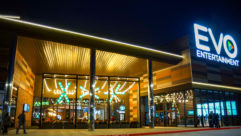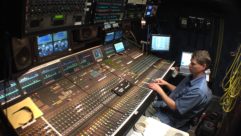
Nobody’s Watching
In the 2002 movie ?Minority Report,? the government’s Precrime Unit identifies crimes before they are committed and jails the would-be offenders. That’s far-fetched, but an emerging field of surveillance techniques called video content analytics (VCA) comes close to it by predicting crimes based on a person’s movements ? all without human intervention.
For example, suppose a surveillance camera that monitors a city street spots someone standing near the curb. Cars frequently pull up to the person, stay a few moments, and then pull away. Is that person a drug dealer, or a helpful bystander giving directions? A human monitoring the camera could distinguish between the two, but a human also requires a salary and health insurance, driving up the cost of protecting an area.
In the 2002 movie “Minority Report,” the government’s Precrime Unit identifies crimes before they are committed and jails the would-be offenders. That’s far-fetched, but an emerging field of surveillance techniques called video content analytics (VCA) comes close to it by predicting crimes based on a person’s movements — all without human intervention.
Viseum’s “Bug” features nine cameras: Eight peer in every direction and, when the system identifies a predefined suspicious activity such as loitering, the ninth pans in that direction and zooms in. Viseum is one example of video content analytics, a next-generation surveillance technique that identifies crimes based on a person’s movements and without human intervention.
Credit: Courtesy of Viseum
VCA aims to eliminate — or at least reduce —the need for a human monitor by using information about an area and sophisticated computer algorithms to make those distinctions. AV pros who target the security market should watch this technology; it reduces a client’s personnel costs, and should make video surveillance more affordable for companies and municipalities.
VCA systems also can improve security by watching a larger area at once without a comparable increase in personnel, and instead of constant camera panning in the hope of catching a crime the moment it happens in that particular direction. The endless panning, often referred to as “preset tours,” essentially is a crapshoot from a security perspective. The longer each scan takes and the wider an area it encompasses, the less likely the system is to record useful information or catch a crime in real time. VCA vendors say the technology eliminates the need for preset tours.
“Everyone in the United Kingdom uses and makes do with preset tours,” says Stuart Thompson, managing director of Viseum Limited, a U.K. company that makes VCA surveillance systems. “The police who have used and benefited from evidence [captured by the] Viseum-driven systems have remarked very encouragingly because of the extended evidence from the recordings.”
Stand Out from the Crowd
Video surveillance is a growth market. For example, the hardware portion — including cameras, digital recorders, and video servers — will grow from $6.6 billion in 2006 to $11.9 billion in 2011, according to iSuppli, an El Segundo, Calif., analyst firm.
VCA is a nascent part of the video surveillance market, but it’s projected to grow more than twice as fast. In 2006, worldwide VCA systems sales totaled less than $100 million, according to iSuppli. By 2011, the firm forecasts sales of about $450 million. That outlook helps explain why the VCA market is already getting crowded.
Among the other VCA competitors are Object Video, 3VR, and Vidient, says Mark Kirstein, vice president of iSuppli’s multimedia content and services practice. “A lot of the systems vendors also have VCA,” he says. “For example, GE Security recently spun off its Interlogics group into a private venture.” As a result, each vendor is looking for ways to stand out from the pack and compete on something other than price.
“Viseum appears to have the whole solution put together, with recognition, tracking, and response all integrated,” says Kirstein. It has a “very compelling value proposition, especially for advanced installations.”
Who’s the Bad Guy?
A VCA system’s value depends largely on its builtin intelligence and on the information it is fed. For example, to determine whether a person on the street is dealing drugs or giving directions, the system would have to know what types of activities go on in that area. It could be near an arena that hosts events that draw suburbanites who are unfamiliar with downtown. It could have a reputation as a good place to score drugs. It is vital to have all this contextual information about a particular area under surveillance.
But there’s a catch: Most environments aren’t that clear cut. For example, suppose the surveillance system detects people dawdling outside of a row of storefronts. Are they loitering or window-shopping? If most of them are window-shopping, can the system pick out those who aren’t, who are potential pickpockets or muggers? These types of questions are important, because they affect whether they system triggers alerts that dispatch police to a crime in progress, or just waste resources by sending them on a wild-goose chase.
WANT MORE?
For more information about Viseum and other surveillance systems, check out:
- Viseum’s Web site at www.viseum.co.uk.
- The April 15 London Times article, “CCTV camera ‘tails’ suspect,” which gives an overview of commercial and university research into intelligent surveillance systems. www.timesonline.co.uk/tol/news/uk/crime/article 1655200.ece
- What’s Next: “Big Brother’s Skewed Perception. Developers of a low-distortion wide-angle lens look to tap the booming surveillance market,” March 2007. http://proav.pubdyn.com/2007March/2007MarchWhatsNext BigBrothersSkewedPerception.htm
- Cheat Sheet: “CCTV Systems.” Monitoring systems with multiple cameras have many applications in both residential and commercial environments. This piece features some ways to simplify the design and installation process. August 2004. http://proav.pubdyn.com/Cheat_Sheets/August718200545931PM.htm
- Entertainment Install: “Casino Rebuilds With Robust AV.” Deftly staying afloat amid the aftermath of Hurricane Katrina, a New Orleans systems integrator worked quickly to build a sprawling surveillance system for a rebuilding casino. December 2006. http://proav.pubdyn.com/2006December/2006DecemberEntertainmentInstall.htm
Eventually, VCA systems could lower insurance costs.
“The concept of Viseum will obviously reduce insurance premiums,” says Thompson. “However, the technology is too new to be recognized by insurance companies at present.”










